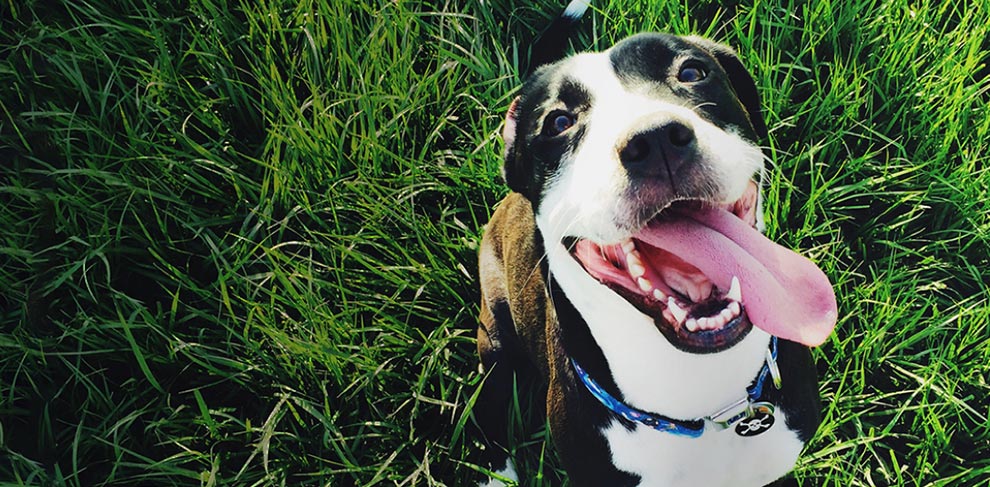Moving to a new home is an upheaval marked by excitement, but it can also impose unforeseen challenges on people and pets. Whether you are adopting a new dog, or moving your current dog to a new home, helping your canine companion prepare for the move will save everyone stress during the weeks of adjustment to follow.
Stress can jeopardize your dog’s health, so it is important to recognize the signs. In this article, we will address how a new environment might disrupt your dog’s sense of calm and provide tips for keeping them comfortable during a big transition. Continue reading to learn more about how to reduce your dog’s occasional anxiety that may occur in a new home.
Recognizing Occasional Dog Anxiety in a New Home
Our pets become complacent in daily activities and the comforts of home familiarity just like us. Dogs love having a routine, so anything that deviates from their expected day-to-day happenings can impose stress.
Signs of Stress in Your Dog
If you are welcoming a new dog to your home, or if you are moving an established dog, you will want to know what signs to look for if they are struggling to adjust. Some common symptoms of stress in dogs may include:
- Pacing
- Panting
- Whimpering
- Trembling
- Aggressiveness
- Accidents indoors (when potty trained)
- Nervously licking their lips
- Loss of appetite
Introducing a Newly Adopted Dog to the Home
Every adopted dog requires time to adjust to new surroundings and people, but every dog is different. Below are some conventional methods of acclimating your new friend to your home.
- Establish Routines Quickly: The sooner your dog adapts to new routines, the happier they will be. Establish the following as quickly as you are able:
- Feeding at the same times every day
- Going out for potty breaks at consistent times
- Going for daily walks at consistent times
- Going to bed around the same time every night
- Be Prepared For Stomach Issues: Adapting to a new diet, eating more or less than they were used to, and general rehoming stress can affect your new pet’s stomach. Perhaps plan to wean your dog off of food they were eating at the shelter, or a foster home, by feeding them familiar food and then gradually introducing new food.
Even if your dog is potty trained, stress might impact their natural rhythms. Prepare for at least a couple of accidents in the house while you are acclimating your new dog. - Give Your Dog Their Own Space: Some dogs respond better when they are given a bed or safe spot to hang out in alone. Provide your dog with a time-consuming treat or Kong in their new spot.
- Supervise, Observe, Adapt: It may be tempting to smother your new pet with attention and affection upon bringing them home. But, it is important to observe their behavior and see where they are personally at with the move.
- Patience is Key: Adopted dogs come with unique sets of experiences and sometimes traumas. Supervise them carefully and adapt to their needs.
Moving Your Established Dog to a New Home
While pets you’ve had for a while don’t need as much attention when moving as new pets do, there are still some steps you can take to make the transition as seamless as possible. Here are some conventional suggestions for helping your dog’s occasional stress after moving to their new home.
- Do Your Best to Maintain a Routine: When moving with your dog, do your best to stay on their usual schedule, even if that is difficult. The more you can stick to your dog’s usual routine when you’re settling in, the better they will be able to adjust as time moves forward.
- Have Their New Space Set-Up and Waiting: Make sure that your dog has a nook with familiar toys, a familiar bed, and anything else you can think of, when they move into a new home.
- Comfort Them With Attention and Your Presence: If you are able, arrange to be home with your dog as much as possible immediately following the move. Your best friend can acclimate easier if their sense of security (you!) is around to reassure them that the new home is a safe space.
- Consider Trying a Calming Supplement: At least a month before your move, consider talking to your vet about prescription medication. If prescription drugs sound like too much, there are also calming aids, zen collars, and even music proven to reduce stress in animals.
- Try CBD for Your Dog: There are several benefits of CBD for dogs including: easing stress from traveling, hospitalization, moving or other situations that may cause anxiousness; helping keep your pet calm and relaxed; and maintaining a normal emotional balance. CBD can help your dog adjust to their new home with an added sense of calm in times of upheaval.
CBD Products for Dogs
Humans and dogs both have an endocannabinoid system (ECS) and just like humans, CBD may similarly help alleviate stress in dogs. Here are a few CBD products for your furry friend that can help your dog adjust to a new home:
- Full-spectrum hemp extract oil – CBD oil for dogs can be administered orally to help promote a sense of calm.
- Calming chews – A medley of extracts and soothing herbs that can help to maintain a sense of comfort for your dog through everyday ups and downs.
Make the Transition of Moving with Your Dog Easier
Whether you are welcoming a new dog to your home or simply moving to a new house with your dog, your furry friend may need time to adjust. Once you know the signs, you can be prepared for stress that is affecting your dog. Along with establishing or sticking to your previous routine, practicing patience, and creating a calm environment, CBD for your dog can aid in adjusting to a major change like a move.




